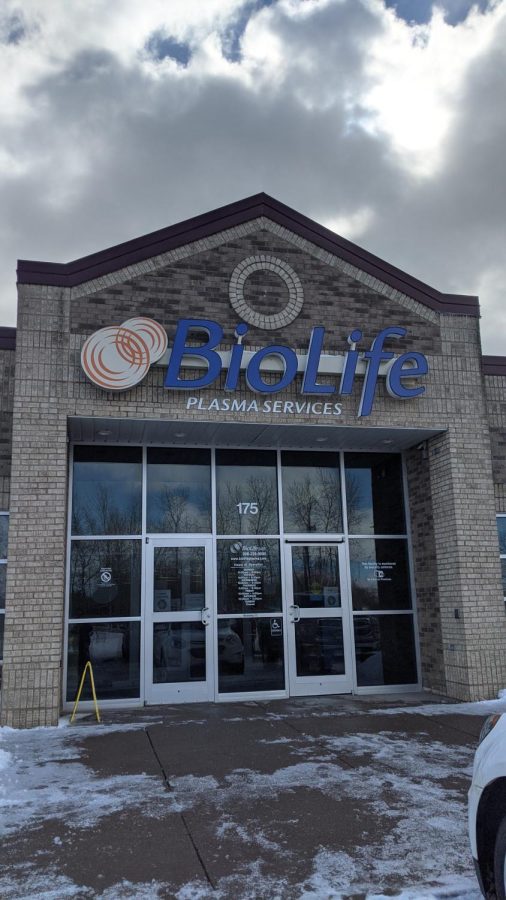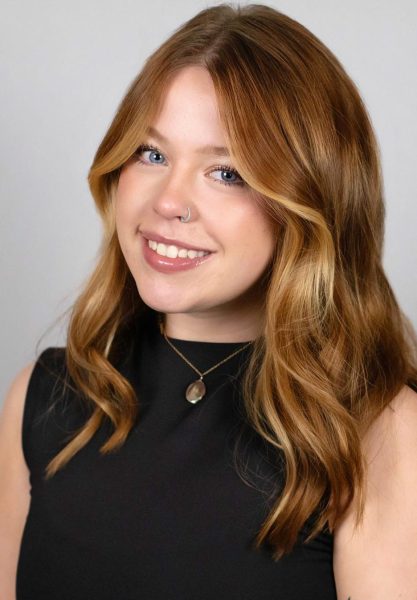Donating plasma saves lives, pays students
BioLife, located at 175 Hawley Street in Marquette, is close to NMU’s main campus and provides easy access for students interested in donating plasma for money. For the month of March, there is a new donor bonus that allows students to make up to $900 in 30 days.
March 7, 2022
Donating plasma by giving blood is an open opportunity for NMU students to save lives, help a good cause and get paid for their contribution at BioLife Plasma Services.
All potential donors must be at least 18 years old and be at least 110 pounds and come with an appointment to BioLife’s Hawley Street location with proof of identification. On the first visit, a physical examination is completed, said Center Manager Trudy Vlahos. BioLife also pays donors based on time and commitment to donating, but specific rates vary based on the local market environment and previous donation history. However, through a special coupon on BioLife’s website, new donors can get paid up to $900 by going eight times within their first month.
“The Marquette center is actively seeking healthy donors, who have a unique opportunity to make a difference in the community through plasma donation,” said Vlahos. “We are grateful for every single person who graciously donates their plasma.”
The plasma collected during a visit goes to life-saving medicines, said Vlahos. Plasma is the clear, straw-colored liquid portion that remains after red blood cells, white blood cells and platelets are removed. Plasma helps the body fight diseases, and the creation of plasma-based medications can take up to 12 months, said Vlahos.
The process uses a machine that collects the donor’s blood and separates the plasma from everything else before returning the plasma-less blood back to the donor. After at least a day between donations, allowing the body to replace the lost plasma, donors can return for a second donation. In a seven-day period, only two donations are allowed.
According to BioLife’s website, while the first donation can take around two hours, most others can take around an hour. Drinking water, maintaining high amounts of protein and iron and being well-rested and healthy are all recommended for any donor, but they can also have an effect on how much time a donation takes.
Mason Cameron, a sophomore majoring in Native American Studies, began donating at the beginning of the Fall 2021 semester. He had seen his friend go and eventually thought it had looked interesting to try. The addition of being given a monetary bonus for the first eight times, said Cameron, also helped to decide.
“[The first time] it was cool,” said Cameron. “It helped me financially as well, which is a good thing.”
The hardest part of the process, said Cameron , was getting over the needle. He was initially worried about the pain from the needle but realized that after the small pinch it was not that bad. Among the different nurses, some poking with the needle perfectly or just being nice, there was an interesting story.
“There was a lady who put the needle in the weirdest way,” said Cameron . “It was almost like she got a ‘running start.’ She held the needle facing one way then brought it around and did like a whole lap. There was so much speed to it. Kind of pinched.”
Cameron said that he would recommend other students going to donate if possible because it was not a bad experience and the people at BioLife are very nice.
Mary Voet, a senior majoring in English Writing, is a student that has been going semi-regularly for the past year and a half. A friend who had been donating for much longer recommended Voet give it a try since it was a relatively easy way to make money. Voet said that the current total made over the past year and a half was probably around $600 to $700, but said that if a donor goes consistently they can make about $800 a month.
“[My first time] I was a bit nervous since at that point I hadn’t even donated blood before,” said Voet. “The idea of my blood being extracted and then put back in was a little daunting.”
Voet mentioned that if a donation lasts for a long time it can get a bit uncomfortable – especially due to the hand pumping a donor needs to do during the process to keep the blood flowing.
Once, one of the machines was acting up and not separating the blood and plasma correctly. Voet did not get to finish the donation that day, but still got paid for coming in. Every other donation went smoothly and it was all for a good cause, said Voet.
“I like knowing that I can help people with autoimmune diseases and other health problems just by donating,” said Voet.
For students interested in becoming a donor, an appointment can be made at Biolife’s website or through its mobile app. After completing a profile and setting up a date, coming with the necessary proof of identification and going through the physical examination on the selected date is all that is needed to start.
“I would definitely recommend it to anyone who isn’t afraid of needles and is looking to make a bit of money,” said Voet. “Not to mention that it’s for a good cause.”


























